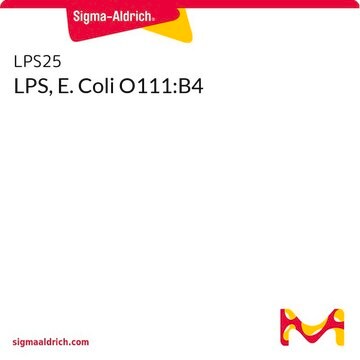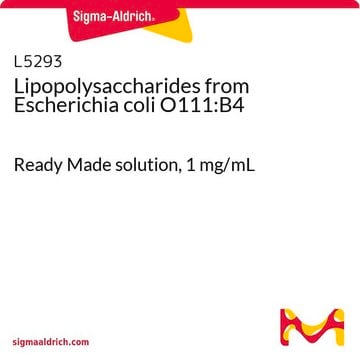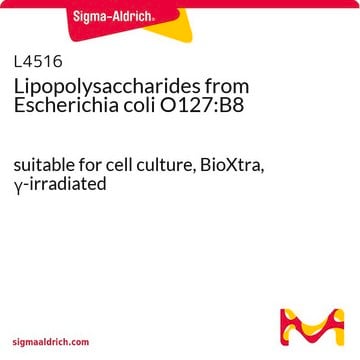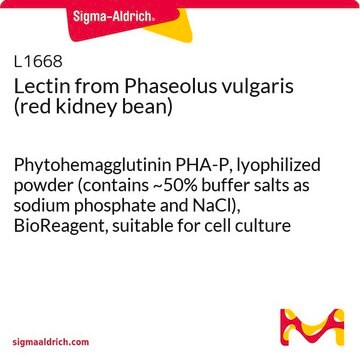437627
Lipopolysaccharide, E. coli O111: B4
from E. coli, , lyophilized, iNOS stimulator, Calbiochem®
Synonim(y):
E. coli O111:B4 LPS, Lipopolisacharyd E. coli
Wybierz wielkość
Wybierz wielkość
About This Item
Polecane produkty
Nazwa produktu
Lipopolysaccharide, E. coli O111: B4, Lipopolysaccharide, E. coli O111: B4 stimulates the activity of inducible nitric oxide synthase. Induces apoptosis in mouse thymus and swine lymphocytes
Poziom jakości
opis
RTECS - OJ0895400
Formularz
lyophilized
producent / nazwa handlowa
Calbiochem®
warunki przechowywania
OK to freeze
zanieczyszczenia
≤2.0% Protein
≤2.5% nucleic acid
Warunki transportu
ambient
temp. przechowywania
2-8°C
Opis ogólny
Działania biochem./fizjol.
Inducible nitric oxide synthase
Ostrzeżenie
Uwaga dotycząca przygotowania
Rekonstytucja
Inne uwagi
Mayeux, P.R., et al. 1995. Biochem. Pharmacol. 49, 115.
Norimatsu, M., et al. 1995. Infect. Immun.63, 1122.
Feinstein, D.L., et al. 1993. J. Neurochem. 60, 1945.
Zhang, Y.H., et al. 1993. Infect. Immun.61, 5044.
Jackson, S.K., et al. 1992. Biochim. Biophys. Acta1135, 165.
O′Sullivan, M.G., et al. 1992. J. Biol. Chem.267, 14547.
Watanabe, K., et al. 1992. J. Cell. Physiol.150, 433.
Morrison, D.C., and Ryan, J.L. 1987. Annu. Rev. Med.38, 417.
Informacje prawne
Hasło ostrzegawcze
Danger
Zwroty wskazujące rodzaj zagrożenia
Zwroty wskazujące środki ostrożności
Klasyfikacja zagrożeń
Acute Tox. 2 Oral
Kod klasy składowania
6.1A - Combustible acute toxic Cat. 1 and 2 / very toxic hazardous materials
Klasa zagrożenia wodnego (WGK)
WGK 3
Temperatura zapłonu (°F)
Not applicable
Temperatura zapłonu (°C)
Not applicable
Certyfikaty analizy (CoA)
Poszukaj Certyfikaty analizy (CoA), wpisując numer partii/serii produktów. Numery serii i partii można znaleźć na etykiecie produktu po słowach „seria” lub „partia”.
Masz już ten produkt?
Dokumenty związane z niedawno zakupionymi produktami zostały zamieszczone w Bibliotece dokumentów.
Klienci oglądali również te produkty
Active Filters
Nasz zespół naukowców ma doświadczenie we wszystkich obszarach badań, w tym w naukach przyrodniczych, materiałoznawstwie, syntezie chemicznej, chromatografii, analityce i wielu innych dziedzinach.
Skontaktuj się z zespołem ds. pomocy technicznej





